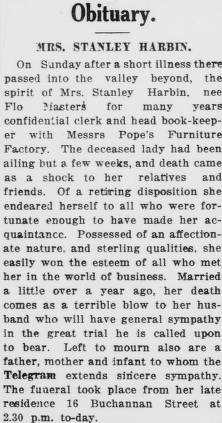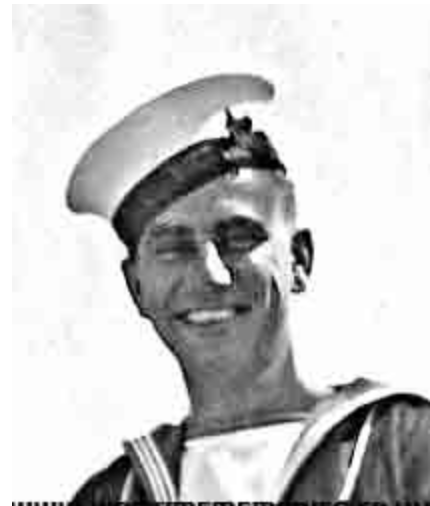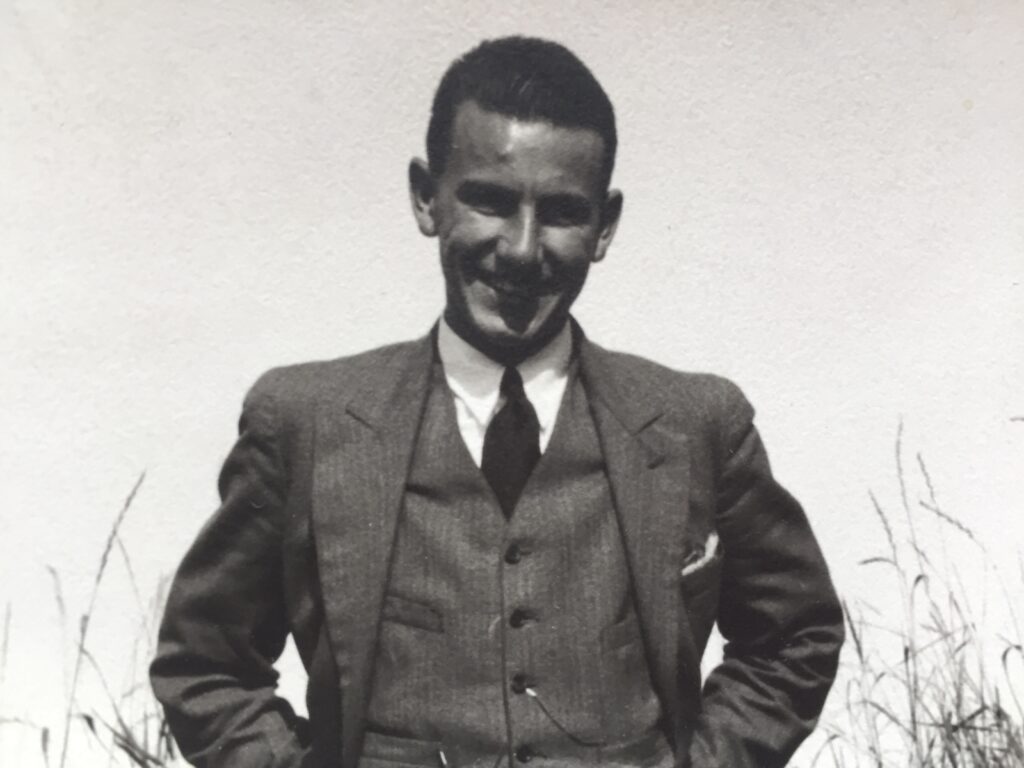Curiousity overcame me when looking into a dormant family mystery. I followed breadcrumbs, hit dead-ends, tried new leads and couldn’t stop. What was whispering to me, to take me on this journey through the ties that bind?
In the early 1980’s, a relative from Newfoundland reached out to my grandmother in Toronto to fill in missing details on a family tree on my grandfather’s side. My grandfather passed away in 1971. After my grandmother provided information on my father, my two uncles and their families, this relative sent back a revised family tree. We were all on it. Also included, a son of my grandfather’s from a first marriage that my dad did not know about. My dad discovered in his fifties, he had a half-brother, who had been adopted by his aunt and who died in the war. His parents had never spoken of it, nor did his mother elaborate on their silence at the time of discovery. This fact was buried in me until I took a three month contract in St. John’s, Newfoundland in the fall of 2018.
On the day I met a friend for lunch at The Rooms, a building that houses art galleries, a museum and the provincial archives, I wandered in early and stumbled upon all the World War I photos of soldiers. I stared at each of them, looking for something familiar in their faces. Was one of them my half-uncle? I did not recall his name and did not know what war claimed him. I mentioned this ancestry to my friend who suggested I look in the archives. When I ambled in after lunch, I had no idea where to start.
I knew that my grandfather’s family originated in Twillingate in the 1830’s. I literally had no other information. As I listened to the archivist go over the records that I could search by parish and location, I feared I wasted my researcher fee. But there happened to be a list of family collections catalogued in a slim duotang. Surprising both of us, he found a file in my family name.
Clearly donated by the family member who reached out in the 1980’s, it included the family tree among other documents. Tears formed in my eyes as I recognized my grandmother’s familiar cursive providing all our family details. My great-grandfather’s will was there, a war zone pass for my grandfather from 1918, and the family history in England back to the 1600’s. But I was looking for the son of my grandfather who was listed with only a question mark beside his first name, Lloyd.
I was curious when Lloyd was born, and in order to search for that, I first needed to know my grandfather’s birth year. Albert Stanley Harbin was born on November 8, 1893 in North Side, Twillingate. Beginning in 1891, the clergy in Newfoundland and Labrador were required to register all baptisms, marriages and burials conducted in their jurisdiction with the government. However the archives only had indexed births from 1891-1899; any time after that was not searchable by name. In the file was the date of birth of my eldest uncle, who was born on May 16, 1924 and I concluded that Lloyd could have been born between 1910 (when my grandfather was 17) and 1923. I looked up baptism records in all religions in Twillingate for those dates but scanning endlessly, I hit a dead end.
Lamenting my short-lived delve into the past, one of the archive employees asked if I had ever looked Lloyd up on a genealogy website. Within seconds of asking, she found him in the 1935 Twillingate census, listed as Lloyd Harbin, thirteen years old, adopted and living with his aunt and uncle, Edward and Hannah Linfield. I literally gasped. This mystery that wandered into my brain when I arrived in St. John’s, unveiled right there in front of me.

The census indicated they owned their six room house worth $500 and that yes, indeed, they owned a radio. But this was the sole entry for Lloyd on the site, no birth or death was linked to this record.
Still curious about Lloyd’s exact date of birth, and with information that narrowed that hunt considerably, I scanned the microfilm for Twillingate in 1922. I searched under the first name Lloyd, I searched under the last name Harbin, I searched under births with only a mother listed in case this was the situation when Lloyd was born. My eyes blurred and the archives were closing; my day’s discovery was minor but impactful.
Since I could not locate a birth record, I returned the next week to see if I could find a record of my grandfather’s marriage. I flipped through all the Methodist marriage records from Twillingate. I found the marriage of Edward Linfield and Hannah Harbin, on August 26, 1908, but nothing for Stanley Harbin. I asked for the microfilm index of marriages in St. John’s and I spotted it – Albert Stanley Harbin’s marriage listed on Roll #3, Page 24, Record #10. A shot in the dark that hit its target! I retrieved the correct microfilm and with my eyes ricocheting back and forth over pages of records like watching trees zipping by on a long car trip, I finally found it. On February 15, 1921, Albert Stanley Harbin married Flora Masters in St. John’s.

I now knew the name of the mother of my half-uncle. But the questions kept arising. Why were my grandfather’s parents not listed as witnesses? Is it possible they were expecting Lloyd before they were married, causing some scandal associated with this union? I had to understand why no information on Lloyd ever made it to my father. I decided to look further on the genealogy website. I found the census records from St. John’s in 1921 which included my grandfather living with Flora, her parents and her younger sister.

I noticed they were a little fast and loose with the birthdates on these census records, my grandfather listed with a birth year of 1890 instead of 1893. It also listed my grandfather’s occupation as a salesman at Knowling. Interestingly, he had left the sea-faring business, the family business of his father, grandfather and great-grandfather.
Another search on Flora Masters turned up a date of death of January 8, 1922, barely eleven months after she married my grandfather. I wondered if she had died giving birth to Lloyd and followed a link to the death record, which read heart failure.


I stumbled across Flora’s obituary in the St. John’s Telegram. Written in the language of the time, Flora’s tribute highlighted her “affectionate nature and sterling qualities” and also how her death was a “terrible blow” to my grandfather. Indeed. The funeral was held in their residence, the same location as her death, and likely the site of their wedding celebration months earlier.
Now I understood a little more about the tragedy that had befallen my grandfather. I have since learned that he boarded Lloyd out, then his sister Hannah asked if she could adopt him, as she had lost several children quite young and she and her husband longed for a boy to take over the family business. My grandfather moved shortly thereafter to Toronto, where later that year he met my grandmother, also originally from Twillingate.
Something compelled me to return to the archives, determined to find Lloyd’s birth date. His mother had not died in childbirth and it seemed that he must have been born in 1921. So back through the microfilm I went, this time for births in St. John’s. Another seeming long car trip through the records, I found it. But his birth name came as a small surprise; William Stephen L. Harbin born on November 29, 1921.

Lloyd was born nine months and two weeks after Stanley and Flora were married. Mystery solved. My brother, born nine months to the hour after my parents were married, carried on that tradition.
The one mystery that still eluded me, was to confirm that Lloyd indeed died in the World War II. While at the archives I found books that listed members of branches of the army. I found him in the Newfoundland Regiment, Nominal Roll.

William Stephen Lloyd Harbin enlisted in the Newfoundland Regiment in July 1940 and was discharged in November 1940. I asked an archive employee if the discharge meant he died in service that day, but he could not be sure. I went home that night thinking I had now come to the end of the road. Called my dad, told him what I had found and he thanked me and told me that was the most he ever knew about his half-brother.
Unable to stop myself, I Googled Lloyd’s regiment and found the same information I found at the archives, the day of enlistment and of discharge, but also the fact that this regiment didn’t go into active service until 1941, so it seemed unlikely that his discharge date had anything to do with his death.
Continuing my prodding of the internet, I Googled William Stephen Lloyd Harbin and found a listing for an Able Seaman, William Stephen Lloyd Linfield, on a web page related to military history. A picture of his smiling face looked out at me. It said he was the adopted son of Hannah and Edward Linfield, and that he had died on the HMS Dasher on March 27, 1943.

There it all was, posted by none other than the source of the family tree. All the information I searched for in one spot, but impossible to find when you don’t have the right name. I started with nothing, then Lloyd, then Lloyd Harbin, then William Stephen Lloyd Harbin, and now William Stephen Lloyd Linfield.
Clearly between discharging from the Regiment and enlisting in the Navy, the family decided to make the adoption legal and Lloyd changed his last name. This made me so happy for Lloyd and his family. The website listed his date of death as March 27, 1943. He was 21 years of age.
A search on the HMS Dasher brought me to a Wikipedia page about the naval ship. The disaster was a huge naval secret at the time, covered up for two years. I cannot imagine the grief it caused the family members of the 327 out of 528 crew members, that died on March 27, 1943. Moored off the coast of Scotland an internal explosion blew it apart and it sunk quickly. Survivors were told not to talk about it, and bodies that washed ashore were buried in unmarked graves.
To this day, there are memorials to those lost to this disaster. I wondered how, and when the Linfield’s were apprised of their son’s death. And my grandfather too.

Now that I had the date and circumstances, I wondered where Lloyd might be buried. I found him at the Chatham Naval Memorial in Chatham, England commemorated on a plaque as Linfield, W.S.L. listed as one of ten Able Seaman from the Royal Navy of Newfoundland that died that day, more than 3,800 km from home.
I found a book written about the disaster and ordered it. In the varied survivor accounts of what transpired after the explosion, I wondered where Lloyd was in the ship when it happened. His final minutes.
I had now truly come to the end of my search. No scandal except for the lack of information flowing down the line.
True to the whole process, I haven’t stopped looking into the past on both my father’s and my mother’s side. It seems like as soon as I locate a record, something else beckons. I am painting a picture, a family portrait though birth records, marriage certificates and gravestones. The foundation on which my life was built.
Thank you Lloyd. Your whispers have reached across time, intriguing me, sparking my curiousity and warming my heart. You are not forgotten.


I love stories of ancestry and genealogy… and marvel at the painstaking research as well as the relevance of keeping records in the first place! Lloyd is now known beyond his 21 years and all because of your curiosity… a reminder of the tapestry of life!
Great story!
Thank you Wendy! It was quite a journey to find him. And I loved it.
Laura, great piece of family history you have uncovered. So many young lives were lost in that war. Paulette and I went to a Canadian Cemetery just south of Rotterdam in May. We paid our respects and gratitude to the often very young Canadian lads who gave up there lives to free the people of Hitler’s reign.
We’ve never been to Twilingate, but it is on our bucket list. We have friends who summer there and tell of an artistic community. We will go soon.
Thank you. I didn’t make it up to Twillingate while I was in St. John’s but hope to one day. I also want to visit Lloyd’s memorial in England.
Hello Laura, I really enjoyed your story. I felt I was with you, especially having spent time myself at The Rooms in St. John’s. Thanks for sharing your creative soul!
Thank you Angela! Thanks for taking the time to read.
Great story! I’m glad you were able to follow the thread and find the answers you were looking for!
For some reason, I googled your name tonight and came across your website, Glad I did.